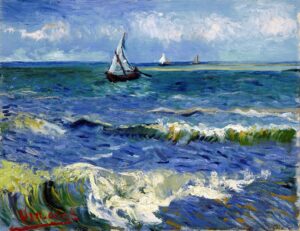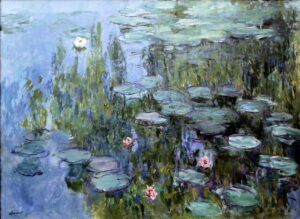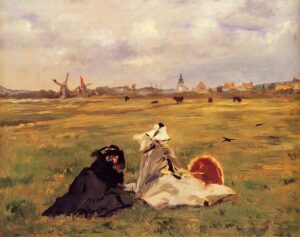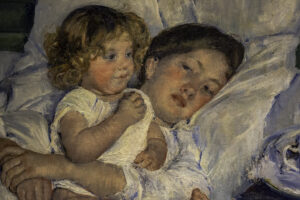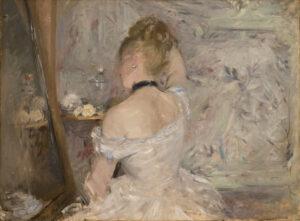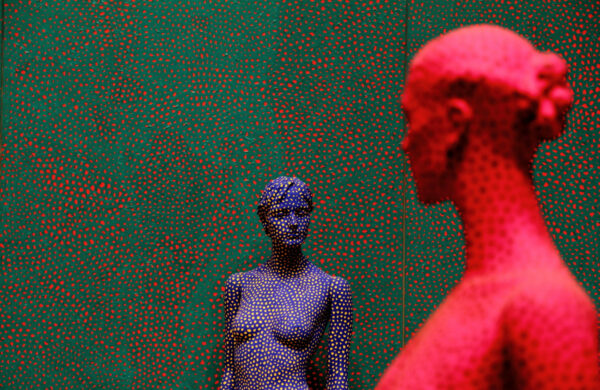Impressionist Artists You Should Know
Impressionist artists changed the art world with their bold techniques. They broke free from old rules to create a new way of painting. This new approach was all about showing life as it is, focusing on light, color, and everyday moments.
This shift laid the foundation for exploring artists who led this movement. Their influence is still felt in art and culture today.
A painting of a Sailboat in the Ocean
Key Takeaways
- Impressionist painting broke away from academic art traditions.
- Famous artists like Claude Monet and Pierre-Auguste Renoir led the movement.
- Emphasis on light and color was a hallmark of their techniques.
- Impressionism continues to influence modern art.
- This style remains beloved and relevant in contemporary art discussions.
Claude Monet: Father of Impressionism
Claude Monet is a key figure among Impressionist Artists You Should Know. He’s known for changing the painting world. His path, from Paris to Giverny, is very interesting.
Monet’s Early Life and Influences
Born in Paris, Monet loved watching how light played over nature. With help from Eugène Boudin, he learned to see and paint the world differently. Even his time in the military shaped his art, showing him new landscapes.
Signature Works of Claude Monet
In 1872, Monet painted Impression, Sunrise. This painting became the name of the whole Impressionist art movement. It showed his unique style with quick brushstrokes and a dreamy feel.
One of his famous works is the Water Lilies series. Over more than 30 years, he painted his garden in Giverny. These paintings show his skill with light and how he saw natural beauty.
Monet’s Legacy in Modern Art
Monet’s influence on art is huge. His work inspired many artists and opened new ways to paint. Even today, artists follow his ideas and techniques.
His legacy is ongoing, with shows of his Water Lilies attracting a lot of people. By painting nature in a new way, Monet changed art for the future.
| Work | Year | Significance |
|---|---|---|
| Impression, Sunrise | 1872 | Started the Impressionist movement, emphasizing light and emotion. |
| Water Lilies | 1899-1926 | A series capturing the ephemeral beauty of nature, showcasing Monet’s mastery of light. |
| Woman with a Parasol | 1875 | Illustrates the use of quick brushstrokes and the capture of momentary effects of light. |
Pierre-Auguste Renoir: The Celebration of Beauty
Pierre-Auguste Renoir was a key figure in the art world. He’s known for his work in the Impressionist style. His art is loved for bright colors and light. It often shows happy scenes of daily life. His paintings continue to charm viewers, making him an artist you should know.
Renoir’s Early Career and Influences
Born in 1841, Renoir started his art in Paris’s lively areas. He was influenced by Eugène Delacroix and French art. At first, he faced money troubles. But, he kept going and joined Charles Gleyre’s studio. There, he met other soon-to-be-famous artists like Monet and Sisley. These connections greatly helped his art and the start of Impressionism.
Notable Works by Pierre-Auguste Renoir
Renoir’s art is full of powerful use of light and color. The Luncheon of the Boating Party is one famous piece. It shows a fun moment in Paris with bright, lively colors. Another important work is Dance at Le Moulin de la Galette. It captures a lively dance scene in Montmartre. These pieces show his love for showing beauty in daily life. This is key in Impressionism.
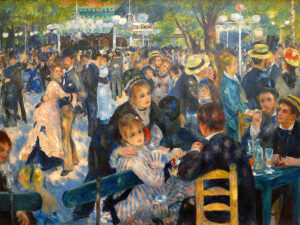 Pierre-Auguste Renoir, Dance at the Moulin de la Galette
Pierre-Auguste Renoir, Dance at the Moulin de la Galette
Renoir’s Impact on Impressionism
Renoir made a big mark on Impressionism and French art. His handling of light and commitment to showing life made him stand out. As a top artist you should know, Renoir celebrated beauty in his paintings. He also motivated other artists to try new things in their art. Even today, his art inspires both new artists and those who love art.
Edgar Degas: Master of Movement
Edgar Degas is seen as a top figure in the world of Impressionist Artists You Should Know. He’s known for showing how people move with beauty and ease. Unlike other artists of his time, he focused on Parisian life. He captured its lively, quick moments.
The way Degas paints ballet scenes is truly special. His works don’t just show dancers. They reveal the hard work and skill that lies behind each elegant moment on stage. Degas shows dancers in rehearsals or stretching, showing every move with care. This gives us a real look into their world.
Degas changed art by the way he put his paintings together. He closely watched how people stood and moved. This helped his art to look real and full of life. His work connects classic themes with new ways of seeing city life.
Even though ballet was his main focus, Edgar Degas also painted other parts of Parisian life. You can see cafes, horse races, and busy streets in his art. Every scene feels alive and true to everyday life. This skill made him a key player in the Impressionist movement.
| Theme | Common Subjects | Distinctive Features |
|---|---|---|
| Ballet | Dancers rehearsing, performing, backstage | Fluid movement, dynamic compositions |
| Parisian Life | Cafes, streets, horse races | Urban ambiance, immediacy |
Camille Pissarro: The People’s Painter
Camille Pissarro is a well-known Impressionist for his focus on rural life. He deeply cared about painting scenes of peasants working and living. With his art, he showed the beauty and hard work of rural communities. This earned him the title of the people’s painter.
Pissarro’s Unique Style and Subjects
Pissarro’s paintings show both detailed nature and the energy of light and movement. He loved painting rural settings where peasants worked and rested. This made his art unique and loved because it told real, honest stories.
Influential Works by Camille Pissarro
Pissarro painted many famous works, focusing on rural and peasant life. For example, ‘The Côte des Bœufs at L’Hermitage’ is a prime example. These paintings show more than just skill; they tell stories and share the artist’s beliefs about equality.
Pissarro’s Role in the Impressionist Movement
Camille Pissarro wasn’t just a great artist; he was key to the Impressionist movement’s success. He guided younger artists and took part in important exhibits. His paintings of rural life and peasants are still admired today. They show the movement’s true spirit and continue to inspire.
| Influential Works | Year | Style and Subject |
|---|---|---|
| The Côte des Bœufs at L’Hermitage | 1877 | Rural scenes, depiction of peasants |
| Two Women Chatting by the Sea, St. Thomas | 1856 | Portrait, rural background |
| Peasants in the Fields, Éragny | 1890 | Peasant labor in rural settings |
Édouard Manet: Bridging Realism and Impressionism
Édouard Manet is key in blending realism with an exciting Impressionist vision. His famous works like Olympia and Luncheon on the Grass show a unique approach. This sets him apart from others in the Impressionist movement.
Manet was known for bold and sometimes shocking art. This made him an early and key player in Impressionism. His piece Olympia was both praised and critiqued. It revealed his talent in depicting the modern world and its people.
“You would hardly believe how difficult it is to place something fundamentally new in everyday terms in art.” – Édouard Manet
Manet shaped the world of art deeply, connecting with great artists like Claude Monet and Edgar Degas. This connection helped spread new ideas that changed modern painting.
| Édouard Manet | Claude Monet | Impact |
|---|---|---|
| Olympia | Impression, Sunrise | Shift from Realism to Impressionism |
| Luncheon on the Grass | Water Lilies | Fusion of Traditional and Modernist Styles |
| Controversial Themes | Nature and Light | Influential Relationships |
| Pioneer of Modernist Painting | Father of Impressionism | Impact on Contemporary Art |
Exploring Manet’s art and choices shows his unique place in the art world. His work has left a big mark on modern art and the Impressionist movement. He is definitely an artist to know about.
Edouard Manet – The Swallows [1873]
Mary Cassatt: The American Impressionist
Mary Cassatt was an American painter who made her mark on the Impressionist movement. She was born in Pennsylvania but found her artistic home in Europe. There, she joined the Impressionists, a prestigious group. Her art, especially her focus on women, gives us important views of her time.
The Life and Times of Mary Cassatt
From early on, Cassatt loved learning and art. She went to the Pennsylvania Academy of the Fine Arts before moving to Paris. There, she overcame challenges to become a respected artist.
Her friendship with Edgar Degas was important. It helped her join the Impressionists and exhibit with them starting in 1879.
Key Works by Mary Cassatt
The Child’s Bath (1893) is one of Cassatt’s most famous works. It shows a mother and child in a quiet, loving moment. Another painting, Little Girl in a Blue Armchair (1878), shows her skill in capturing emotions and poses.
These paintings highlight why Cassatt is a key figure in art history.
Mary Cassatt’s Influence on Women in Art
Cassatt’s work was more than beautiful — it inspired many women artists. She painted the everyday lives of women and children, giving a unique perspective. As an influential American Impressionist, she helped future female artists find their voice.
Breakfast in Bed by Mary Cassatt, 1844-1926
Berthe Morisot: A Leading Female Impressionist
Berthe Morisot was a key figure among female Impressionists in a mainly male art world. She was famous for showing the lives of Parisian artists in a captivating light. Unlike her male peers, Morisot focused on the quiet moments of women and children. This highlighted the beauty in everyday life.
Morisot faced many challenges to succeed, given that few women were recognized in art. But her unmatched skill and drive led her to become a top name in the Impressionist Artists You Should Know. Her art portrayed the norms of French society and a yearning for freedom. This mix of themes brought a fresh perspective to Impressionism.
Morisot tackled issues like societal expectations while she evolved her art. For example, in “The Cradle,” she used simple strokes and light to express deep feelings. These unique choices cemented her place among the best female Impressionists. Her work is a timeless record of life in 19th-century Paris. It still captivates Parisian artists and art lovers around the globe.
“Woman at her Toilette” by Berthe Morisot
Impressionist Artists You Should Know: A Comprehensive Overview
Exploring Impressionism’s history and impact is key. Our journey shows how it started a new chapter in art. This movement began in the late 19th century, breaking free from old styles. Learn how these artists brought something new to the world of art.
The Evolution of Impressionism
In the 1860s, Impressionism was born in France. It was a response to strict rules in the art world. Artists like Monet, Renoir, and Degas chose a more natural way to paint. They used quick brushstrokes to show movement and the effects of light. Their art focused on everyday life, making it relatable and fresh.
Key Characteristics of Impressionist Art
Impressionist art is known for its nature and light themes. The artists worked outside to capture real light effects. They used bold colors and fast brushstrokes. This made their art look alive and full of movement. They painted scenes from daily life, which was a novel idea back then.
Lasting Impact of Impressionism on Modern Art
Impressionism didn’t stop at its time. It inspired many other art forms after, like Fauvism and abstract art. By rejecting old ways, Impressionism started a new era in art. Its bold use of color and light still influences artists today. This shows how powerful its ideas were and continue to be.
FAQ
What is Impressionism and how did it revolutionize art?
Impressionism began in France in the late 19th century. It’s all about light and how it changes, with a special focus on motion. Artists used new techniques, like visible brushwork and choosing regular life as their subject. This new approach was led by famous artists such as Claude Monet and Pierre-Auguste Renoir.
Why is Claude Monet considered the father of Impressionism?
Claude Monet changed how artists could paint with light and color. His painting ‘Impression, Sunrise’ not only named the movement but also showed its vision. Monet loved painting outdoors, which inspired many to do the same.
What are some of Claude Monet’s most famous works?
Monet’s top works include ‘Impression, Sunrise,’ the ‘Water Lilies,’ ‘Haystacks,’ and ‘Rouen Cathedral’ series. These paintings show his incredible skill at capturing light and atmosphere changes.
How did Pierre-Auguste Renoir contribute to the Impressionist movement?
Pierre-Auguste Renoir focused on bringing everyday beauty to his paintings using bright colors. His famous works ‘Luncheon of the Boating Party’ and ‘Dance at Le Moulin de la Galette’ show lively gatherings and scenes. Renoir filled his paintings with joy and color.
What makes Edgar Degas unique among Impressionist artists?
Edgar Degas was unique for showing human movement, often featuring dancers and urban scenes. His work on ballet, like ‘The Dance Class,’ stands out. Degas used unusual angles to illustrate real-life scenes. His style greatly influenced modern art.
Who was Camille Pissarro and what subjects did he focus on?
Known as the “People’s Painter,” Camille Pissarro highlighted rural and urban life in his art. He often chose peasants and workers as his subjects. One of his famous works, ‘The Côte des Bœufs at L’Hermitage,’ shows his love for everyday scenes. He was also a mentor to other Impressionist artists.
How did Édouard Manet bridge the gap between Realism and Impressionism?
Édouard Manet mixed real-life scenes with modern ideas, influencing both Realism and Impressionism. His works, like ‘Olympia,’ challenged traditional art. This showed the way for future artists to try new approaches.
What is Mary Cassatt known for in the context of Impressionism?
Mary Cassatt showed daily life, especially of women and children. She was a crucial American artist in the French Impressionist scene. Her work, such as ‘The Child’s Bath,’ brought a personal view on women’s ordinary moments. She also furthered women’s roles in art.
What contributions did Berthe Morisot make to the Impressionist movement?
Berthe Morisot was a leading female artist in Impressionism, painting family life and women’s worlds. She broke barriers and offered a woman’s perspective in her work. Morisot’s unique vision helped open doors for women artists to come.
How did Impressionism influence the development of modern art?
The Impressionist movement changed art, focusing on personal views, light, and nature. It inspired artists to capture the moment and daily life in new ways. Later movements like Fauvism and Abstract Expressionism drew from Impressionism. Its impact on art remains strong today.
